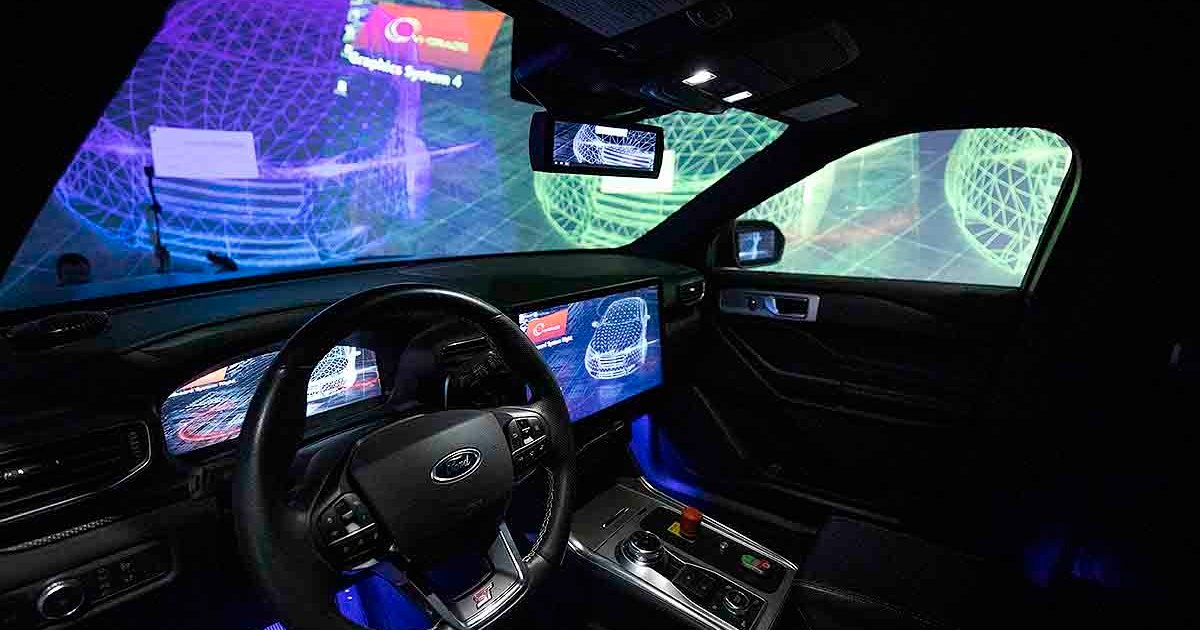
An advanced driving simulator is helping Ford Motor Co. push out new vehicles more efficiently.
The simulator in Dearborn, Mich., which helped bring the Maverick and F-150 Lightning to market, uses rFpro, a driving simulation software, and lidar by scanning roads to the millimeter to create an immersive experience for the driver, a Ford official said.
“We use the simulator to refine everything before we even build a prototype. Everything from the suspension, architecture, layout, basic tuning, even starting to develop all the ride handling characteristics, we did that in the simulator,” said Louis Jamail, Ford’s core methods and simulator supervisor.
“Once we go to the prototype stage, we were able to transfer all that knowledge into the physical prototype and do much less tuning and changes. That saves both time and money. And it also helps us to deliver a more focused product from the beginning.”
Ford simulation technical expert Robert Rieveley said the device’s movement capabilities also give it an advantage over other simulators.
“The simulator actually moves forward and backward, and we’re allowed to move within our working envelope. So that movement actually gives you that acceleration-deceleration field. Larger simulators do exist, but this for us was a great opportunity for engineering value,” Rieveley said.
Initially starting as a racing simulator similar to the Ford Performance simulator in Charlotte, N.C., the Dearborn simulator has evolved to replicate road vehicles, Jamail said.
“We started this simulator journey as a company back in 2016. We’ve grown the technology since then. We’ve partnered up with Ford Performance over the last several years to use their simulator in Charlotte,” Jamail said. “Since then, we’ve adapted the simulator to all of our production and mainstream products. It’s not just a racing [simulator] anymore.”
Ford can also now bring consumers in to simulate driving in a vehicle, enabling valuable feedback, Rieveley said.
“We’re able to bring real customers in and get the voice of the customer, what do they think of what we’re designing, how can we improve it, and then we start looking at how we develop and validate our features,” Rievely said. “We can really explore the space and see how our features and how people react in those scenarios. And we’re able to do it efficiently and safely.”
The simulator will be crucial in continuing to get Ford vehicles to consumers, Jamail said.
“I think it’s going to be pretty big. We can use this across the board,” Jamail said. “This is a really valuable tool because it requires no physical building; we can just look at it in virtual space.”